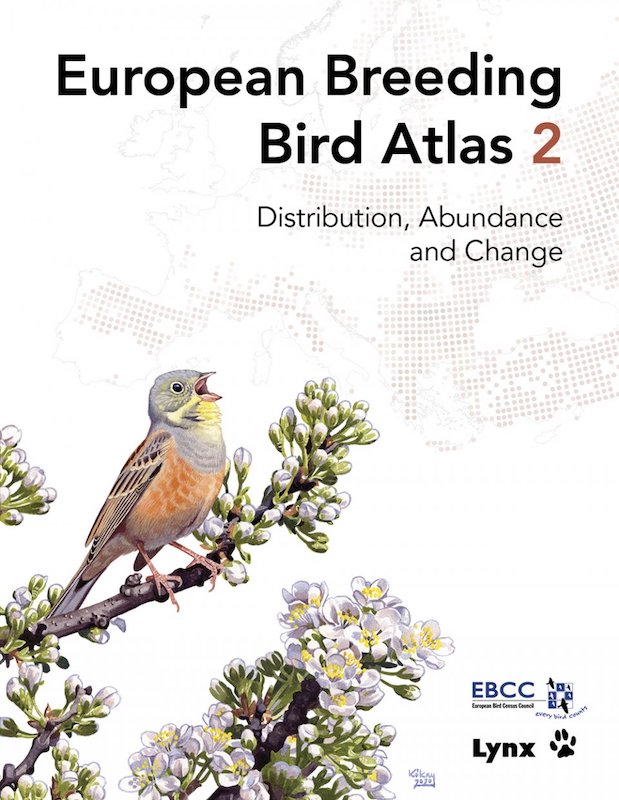| European Breeding Bird Atlas 2 – Distribution, Abundance and Change | Verena Keller, Sergi Herrando, Petr Voříšek, Martí Rodríguez-Franch, Marina Kipson, Pietro Milanesi, David Martí, Marc Anton, Alena Klvaňová, Mikhail V Kalyakin, Hans-Günther Bauer, Ruud PB Foppen | Lynx Edicions | 2020 | Hardback | eBook available | 549 Pages | ISBN: 9788416728381 | £84.99p |

More than 20 years after the publication of the first European Breeding Bird Atlas, this book is the most up-to-date source of information on distribution, abundance and change of bird populations in Europe.
The Publisher’s View:
Determining properly where birds are in this changing world is of paramount importance for their conservation, and doing that at a continental scale is something that can be only achieved under a strong willingness of international cooperation. To do that, the European Bird Census Council (EBCC) is organised as a network of expert ornithologists that boost bird atlas work across Europe.
The first European Breeding Bird Atlas (EBBA1) published by the EBCC in 1997 was a milestone in European ornithology. The project of the second European Breeding Bird Atlas (EBBA2) was carried out by the EBCC network of partner organisations from 48 countries. In total, around 120,000 fieldworkers contributed data to the atlas, the great majority of them on a voluntary basis. As such this project constitutes one of the biggest citizen science projects on biodiversity ever. Data collection and analysis followed a rigorous scientific protocol, led by a team of researchers from ornithological institutes with many years of experience in atlas work.
The huge fieldwork effort resulted in unprecedented geographical coverage for a biodiversity atlas in Europe, including all areas up to the Ural Mountains and the Caspian Sea that were not well covered for EBBA1. These data were mainly collected for the period lasting from 2013 to 2017.
European Breeding Bird Atlas 2 presents information on all species reported to breed in the study period and some with more uncertain breeding status. A total of 556 species are treated with a full species account including maps, text and an illustration; information on 69 very rare or irregularly breeding species is presented in an Appendix. Full species accounts include distribution maps at a resolution of 50×50 km (usually showing abundance data), modelled distribution maps with a resolution of 10×10 km (for 224 breeding birds) and change maps documenting changes in distribution since the first atlas.
Original artwork illustrates all species with a full account. Illustrations were provided by 45 artists from 18 countries, with different styles and techniques, reflecting European diversity.
This book represents the most up-to-date source of information on bird distribution and change in Europe, and a great contribution to the global aim of understanding biodiversity to ensure its conservation.
Fatbirder View:
The most important publication on European birds in a quarter of a century! Its 24 years since the last breeding bird Atlas and the changes are not just interesting for birders, they are crucial to conservationists across forty-eight countries and beyond.
120,000 citizen scientists and hundreds of contributors have made this the most import book of the last two decades… now we can truly compare how things were with how they are. We have the facts at our fingertips and can support our hypotheses about climate change and urbanisation, disturbance and population pressure.
A monumental cooperation like this could be a dog’s dinner but it is actually the dog’s most precious assets!
Moreover, this is a beautifully produced and presented book. Not just informative but a pleasure to turn its top-quality pages. Whether you want to chart the progress of Cetti’s warblers or find out why other birds have declined it’s all here.
I rarely describe a book as important, this goes beyond that, it is crucial!
Fatbirder
